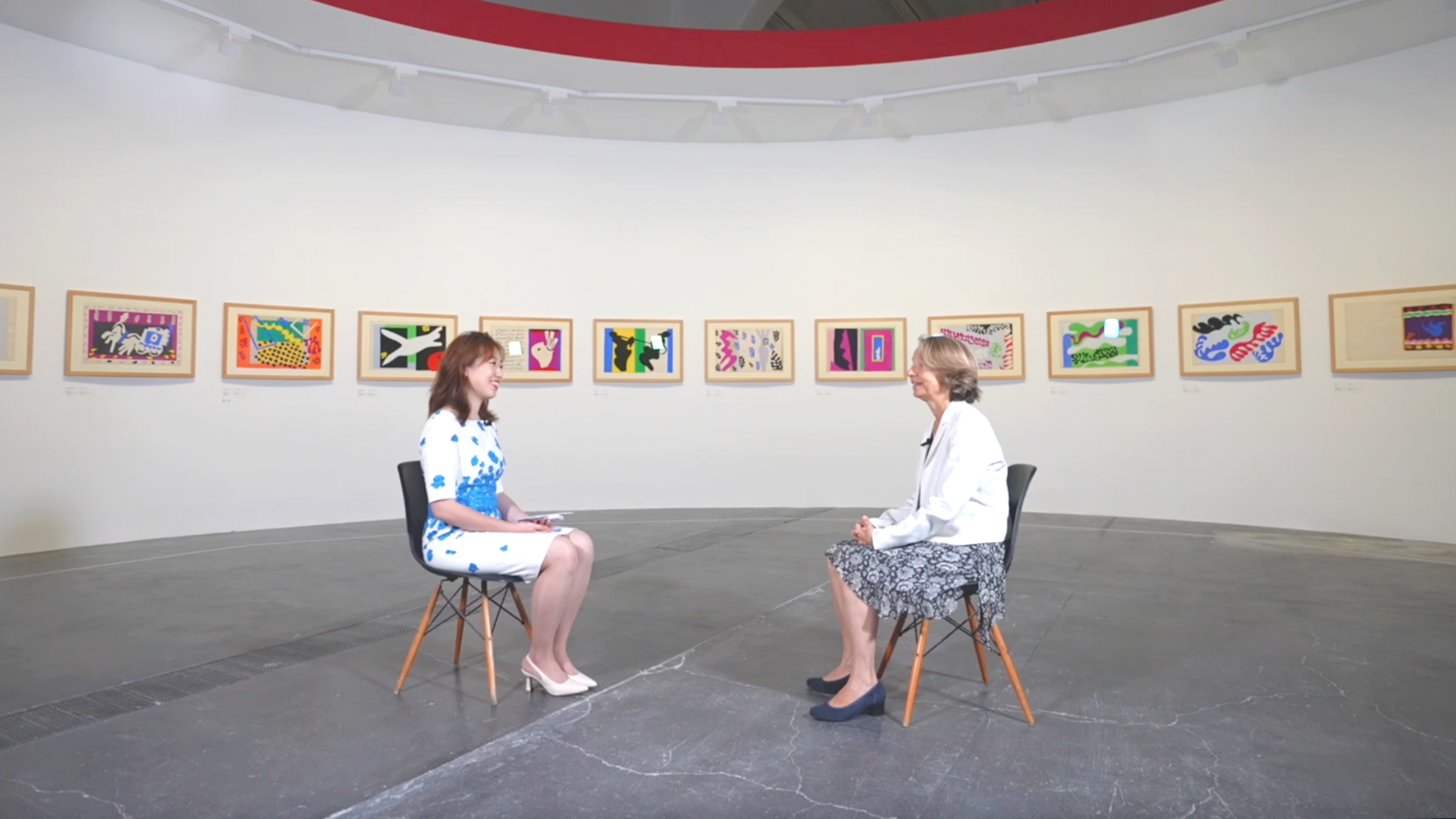With the easing of COVID-19 restrictions in China, major international exhibitions are heading to the country once again, showcasing some of the best art from around the world. The UCCA Center for Contemporary Art has partnered with the Musée Matisse to present China's first solo exhibition of Henri Matisse's artwork. In our fourth episode, reporter Wang Siwen caught up with Sophie Le Flamanc, deputy director of Musée Matisse, to discuss the cultural exchanges between China and France, and how the beauty of art has become a universal language and timeless experience shared by both countries.
05:53

"Matisse by Matisse" exhibition opens in Beijing after four years of preparation
Le Flamanc: The first discussion between the UCCA and our Musée Matisse, Le Cateau-Cambrésis, began four years ago. It was a long course, and we advanced step-by-step to realize the project. For the first time, we had all entire collection, with precisely 281 artworks, transported in two trucks from the museum to the airport in France to be flown over on two planes. It was very big job for us. It was also very rewarding work even though we were stressed. It was the first time that all the collection had left the museum and been shipped abroad so far from France. I think it's a wonderful opportunity for Chinese visitors and also for our museum. I hope that everybody will have the same feeling.
Le Flamanc: Art exchanges are good for China-France ties
It was the first time for the department to organize an exhibition with another country, especially with China. We are very honored because it gave us the opportunity to take our collection abroad and show it here in China. I think it's very good for the relationship between the two countries, between French people and Chinese people, to get to know each other better.
Le Flamanc: Matisse had great interest in Chinese art and civilization
Matisse was connected with China, even if he didn't travel to the country. He was very interested in China's art and civilization. He knew China and Chinese art collections very well, as he visited the Louvre Museum very often. Matisse was an art collector himself and also collected clothes. He had a wonderful collection of Chinese coats that visitors can discover at the exhibition.
Le Flamanc: Everyday is different as a deputy director of the museum
I like my job very, very much because each day is different and every day something new happens. I have three main activities. The first was the preparation of the exhibition. Then, I had to supervise the renovation of the museum. And the third task was the preparation for the reopening. After that, the next thing will be the preparation work for a new exhibition. Musée Matisse is located in a small city, but it is a big and beautiful museum. We intend to have more visitors coming from abroad and other continents, especially from Asia and China.
Le Flamanc: "Window in Tahiti" was one of Matisse's finest works
"Window in Tahiti" was a very important work for Matisse. He travelled there, but he waited a long time before painting the landscape. This painting was a wonderful discovery for him. I like the vents, the chapel, very much. This is one of the works from the end of his life. It is like a spiritual testament. And for him, it is one of the most important artworks of all his career.